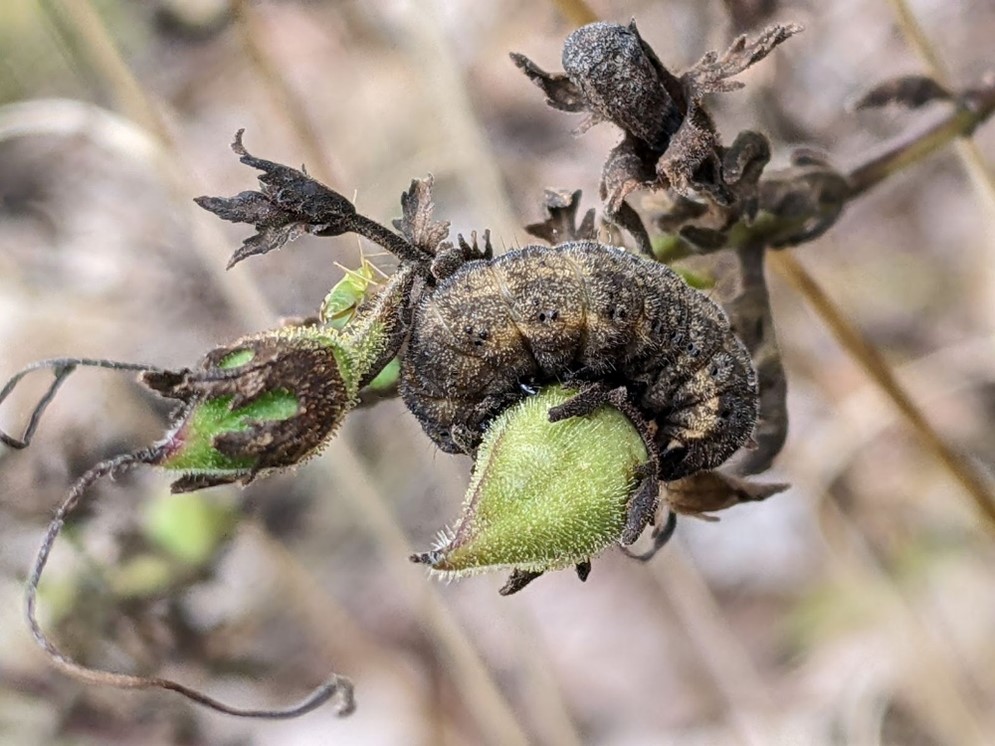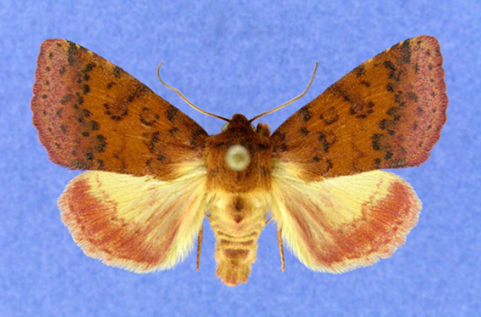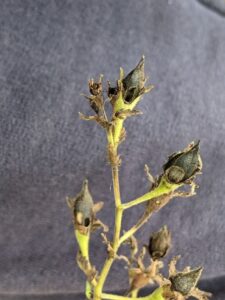Here on the blog, we’ve discussed our efforts monitoring insects such as the frosted elfin and plants like New England blazing star, as well as several broader efforts planting native wildflowers for pollinators and other rare insects. Now we are adding a new species to our ongoing insect and plant conservation efforts. Let me introduce you to the orange sallow moth (Pyrrhia aurantiago).

These wonderfully fall-colored individuals are orange sallow moth caterpillars. In 2022 we have documented 3 sites with orange sallow moth caterpillars and 7 sites that have fern-leaved false foxglove populations. One site in Boston had historical records of the species from over 20 years ago but the species had not been documented again until found by our staff!
As you may have gathered, this species has a very specific host plant that it uses to lay its eggs. The species is known to use two species of false foxgloves (Aureolaria pedicularia and Aureolaria flava). Although neither of the false foxgloves are threatened and both are known to have stable populations, the moths are a state listed species of special concern in Massachusetts. Throughout much of their range across the Eastern US including Massachusetts, they tend to have scattered populations and large areas where they do not occur.

Their false foxglove host also shares another interesting relationship. They are considered hemiparasitic species that attach to the roots of oak trees. This means that they get some of their nutrients from the oak roots they parasitize. These plants tend to prefer sandy soils and typically grow in dry sunny upland forest and rocky slopes, outcrops, or alongside trails.

Although our search efforts were able to document caterpillars of the species, there is also another way to confirm the moths’ presence without ever seeing the adults or the caterpillars. The caterpillars leave a distinct circular hole in the seed pods of their false foxglove host plants as they feed. This allows us to determine if caterpillars were present and feeding on the plants in late fall after pupae have already left the plants to overwinter (see photo right).
This fall ZNE staff have collected some seeds from several of the sites with false foxglove populations and plan to grow the plants to later be propagated in new locations or improve the population at current locations. We are working with our ongoing partner organization Urban Wilds to check a population of false foxgloves on one of their properties and may plant propagated false foxgloves to improve the population at this site. We also plan to continue our monitoring efforts for the orange sallow moth in known populations as well as looking for new records.
